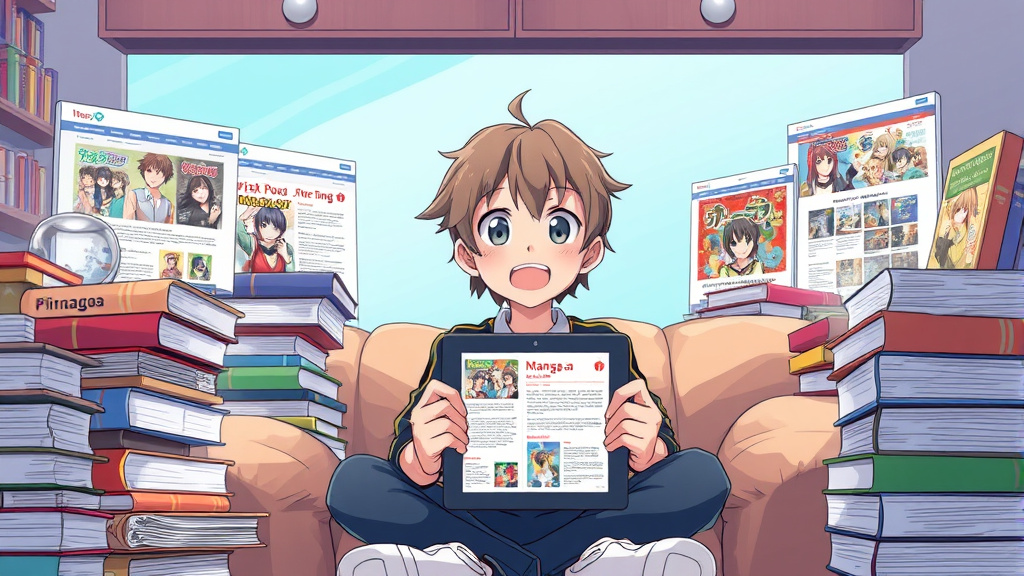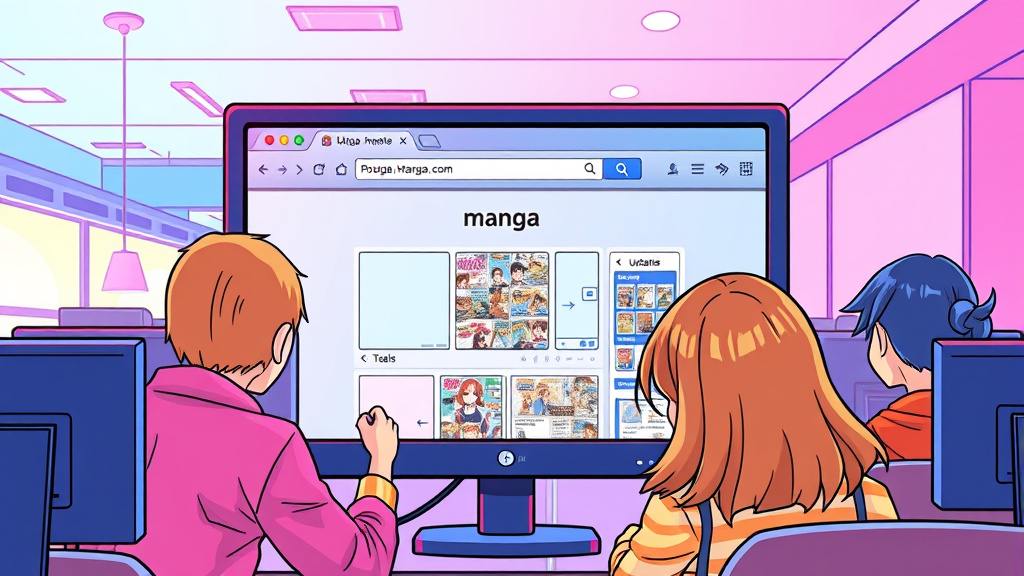manga anime embodies a unique blend of art, storytelling, and cultural expression that has taken the world by storm. From vibrant illustrations and complex characters to emotionally charged narratives, manga anime has established itself as a significant component of contemporary pop culture. Its ability to transcend language barriers and cultural differences makes it a universal phenomenon that continues to grow in popularity, influencing everything from fashion and music to lifestyle and entertainment. Whether you’re a seasoned enthusiast or just beginning to explore this fascinating universe, understanding the core elements of manga anime reveals why it remains both timeless and innovative.
The Enduring Appeal of Manga and Anime – A Global Phenomenon
The enduring appeal of manga and anime is rooted in their ability to evoke deep emotional resonance and provide escapism through compelling stories. Unlike other forms of entertainment, manga and anime often explore complex themes—ranging from love and friendship to war and morality—while simultaneously offering visually stunning artistry. This combination creates a multi-layered experience that appeals to diverse age groups and cultural backgrounds. Their global dissemination has fostered communities that share a passion for this art form, transcending geographical boundaries and uniting fans through conventions, online forums, and social media platforms.
Additionally, the accessibility of manga and anime—as they are often available in digital formats and multiple languages—has played a pivotal role in their worldwide reach. As local markets adapt and local creators emerge, the landscape continues to evolve, making room for fresh voices and innovative storytelling. This continuous cycle of renewal and adaptation is why manga anime maintains its relevancy, inspiring new generations while honoring its roots. Its ability to reflect societal issues, inspire creativity, and foster cultural exchange contributes to its status not just as entertainment, but as a global cultural movement.
 Hình minh họa: manga anime – websites to read manga without ads
Hình minh họa: manga anime – websites to read manga without adsExploring the Diverse Genres and Styles of Japanese Manga
The world of manga is incredibly rich and diverse, encompassing an array of genres that cater to virtually every reader’s taste. From shonen (action-adventure) and shojo (romance and drama) to seinen (adult themes) and josei (women’s stories), manga offers a spectrum of narratives designed to resonate with specific audiences. Each genre employs distinct stylistic choices and storytelling techniques, often reflecting cultural nuances that add depth and authenticity. For instance, shonen manga like One Piece and My Hero Academia are characterized by dynamic action sequences and themes of perseverance, while shojo titles like Fruits Basket focus on romance and personal growth.
The stylistic diversity extends beyond genres to artistic techniques, ranging from highly detailed backgrounds to minimalist character designs. Some manga emphasize hyper-realistic art, while others favor exaggerated expressions and chibi characters for comedic effect. This artistic flexibility allows creators to experiment and push boundaries, resulting in innovation across multiple styles. Such variety not only caters to a broad audience but also fosters a creative environment where new genres and hybrid styles continue to emerge, ensuring that manga remains a vibrant and evolving art form.

From Page to Screen – Adapting Manga for Anime Success
Translating manga into anime is both an art and a science, requiring careful planning to preserve the essence of the original work while adapting it for a different medium. Successful adaptations often serve as a bridge, inviting new audiences to discover beloved stories in a dynamic, animated format. One of the key challenges in this process is balancing faithfulness to the manga with decisions about pacing, animation quality, and voice acting. For instance, series like Naruto and Attack on Titan have grown their global fan bases through exceptional animation production coupled with compelling storytelling.
Anime adaptations also open doors for creative reinterpretation. Directors may choose to expand on scenes, introduce new characters, or alter narrative trajectories to enhance visual storytelling. The transition from page to screen is not without pitfalls, however, as some adaptations risk losing the nuanced storytelling of manga or rushing the plot. Nonetheless, when done well, anime adaptations can elevate the source material, increase its popularity, and spawn broader media franchises, including video games and merchandise, creating a symbiotic growth cycle that benefits both industries.
The Cultural Impact of Manga and Anime on Western Audiences
Manga and anime have exerted a profound influence on Western pop culture, often serving as catalysts for greater intercultural understanding. With iconic series like Dragon Ball, Sailor Moon, and Pokemon, Japanese storytelling has found a dedicated audience across North America and Europe. These series not only introduced viewers to new storytelling norms but also inspired fashion trends, music, and art styles in the West. The rise of cosplay culture, where fans dress as their favorite characters, exemplifies the deep engagement and cultural crossover facilitated by manga anime.
Moreover, the global popularity of manga anime has prompted Western creators to incorporate Japanese themes and aesthetics into their own work, fostering a rich exchange of ideas. Platforms like Crunchyroll and Netflix have democratized access to manga anime, making it easier than ever for Western audiences to explore Japanese culture firsthand. This exchange extends beyond entertainment as it sparks conversations around cultural identity, societal values, and intercultural appreciation, solidifying manga anime’s status as a vital component of global cultural dialogue.
A Deep Dive into Iconic Manga and Anime Characters
Iconic characters are at the heart of manga anime’s storytelling appeal, often serving as symbols of broader themes and ideals. Characters like Goku from Dragon Ball, Naruto from Naruto, and Luffy from One Piece embody perseverance, friendship, and the pursuit of dreams. Their vivid personalities and relatable struggles help audiences emotionally connect with the stories, fostering fandoms that span generations. The development of these characters over long storylines demonstrates skillful character arc construction, making them memorable and influential beyond their original series.
Beyond their narrative importance, these characters often transcend their stories, becoming cultural icons recognized worldwide. They appear on merchandise, in advertising campaigns, and are even integrated into social movements. The artistic design of these characters—distinctive facial expressions, unique costumes, and memorable silhouettes—contributes significantly to their lasting impact. Their enduring popularity illustrates how well-crafted characters can shape storytelling, inspire creativity, and forge identities within the manga anime community.
The Art of Storytelling in Manga and Anime – Narrative Techniques
Manga and anime employ a rich array of narrative techniques that make their stories compelling and emotionally resonant. Visual storytelling plays a vital role, with panel layouts, framing, and color use guiding the viewer’s emotional journey. For example, dramatic close-ups and dynamic action sequences heighten tension, while slower, contemplative scenes allow viewers to reflect on characters’ motives and emotions. Many manga creators utilize nonlinear storytelling, flashbacks, and symbolic imagery to add depth, making each chapter or episode a layered experience.
Furthermore, the narrative themes often explore universal human experiences such as identity, love, loss, and resilience, yet are deeply rooted in Japanese culture and folklore. This blend adds a distinctive flavor, turning familiar themes into fresh explorations. Characterization is also crucial—complex protagonists and morally ambiguous antagonists contribute to layered storytelling that challenges viewers’ perceptions. The skillful integration of visual and narrative elements ensures manga and anime remain a profound medium for exploring the depths of human emotion and societal issues.
Beyond Entertainment – Exploring the Themes and Messages in Manga and Anime
Unlike many entertainment forms that focus solely on escapism, manga and anime often carry profound themes and messages that encourage reflection. Titles such as Akira and Neon Genesis Evangelion grapple with existential questions, societal collapse, and the human condition, prompting viewers to think critically about their world. Others, like My Neighbor Totoro, convey messages of innocence, hope, and harmony with nature, highlighting the diversity of themes encapsulated within this art form.
These themes often mirror contemporary societal issues—politics, discrimination, environmental crises—making manga and anime powerful tools for social commentary. They challenge stereotypes, explore complex moral dilemmas, and inspire activism or awareness. By doing so, manga anime serve not merely as entertainment but as cultural texts that influence perceptions, foster empathy, and stimulate dialogue around fundamental human concerns. This thematic depth adds considerable value to their enduring popularity and artistic significance.
The Evolution of Manga and Anime – A Historical Perspective
The history of manga and anime is a story of innovation, resilience, and adaptation. Their origins trace back to early Japanese art and storytelling traditions, evolving through post-war influences and technological advancements. The post-1960s emergence of TV animation marked a significant turning point, making anime a household staple. Iconic series like Astro Boy and Kimba the White Lion laid the groundwork for styles and storytelling techniques still in use today.
Over time, manga and anime have reflected societal shifts—from the rebellious spirit of Akira during the economic bubble to the introspective narratives of Your Lie in April. The advent of digital technology has democratized creation and distribution, allowing independent creators to reach global audiences. As the industry continues to adapt, it remains a dynamic and influential cultural force, continuously reshaping itself to meet contemporary tastes while honoring its rich history.
The Business of Manga and Anime – Industry Trends and Future Prospects
The manga and anime industry is a vibrant and rapidly evolving commercial powerhouse, with a global market worth billions of dollars. Industry trends indicate a shift toward digital platforms, with streaming services like Crunchyroll, Funimation, and Netflix increasing accessibility and licensing opportunities. This digital transformation has allowed for faster releases, broader distribution, and a richer diversity of content, catering to a global audience. Meanwhile, the production of high-quality anime movies, such as those by Studio Ghibli and Makoto Shinkai, continues to draw international crowds and critical acclaim.
Looking ahead, the industry faces both exciting opportunities and challenges. The rise of virtual reality and augmented reality offers new immersive experiences, while cross-media expansions—video games, novels, merchandise—drive revenue streams. However, issues like copyright enforcement and cultural localization remain critical. Overall, the future of manga anime is poised for growth, with a continued emphasis on innovative storytelling, technological integration, and global collaboration maintaining its relevance and appeal.
Manga and Anime Fandom – Communities, Conventions, and Cosplay Culture
The passion for manga anime is manifested in vibrant communities that span the globe, fostering connections through shared interests. Online forums, social media groups, and fan art platforms create spaces for fans to discuss theories, share creations, and celebrate their favorite series. Fan communities also play a significant role in promoting lesser-known works and supporting emerging creators, ensuring the vitality and diversity of manga anime culture.
On the ground, conventions and cosplay events are where fans express their enthusiasm through costumes, acting, and performance art. Cosplay, in particular, has become a global phenomenon, with enthusiasts paying meticulous attention to detail in depicting characters from manga and anime. These gatherings are not merely about entertainment—they serve as cultural exchanges, celebrations of identity, and opportunities for creativity and community building. The devotion and ingenuity shown in these fan activities testify to the lasting impact of manga anime as a force that unites, inspires, and transforms its followers.
## Conclusion
In essence, manga and anime represent more than just entertainment—they are a cultural phenomenon that bridges generations, languages, and borders. Their diverse genres and artistic styles reflect a rich cultural tapestry, while their storytelling techniques explore universal themes with depth and nuance. From their roots in Japanese tradition to their global reach today, manga anime continues to evolve, inspiring new creators and engaging audiences worldwide. The business landscape adapts with technological innovations, and passionate fandoms breathe life into vibrant communities that celebrate this art form’s creative spirit. Ultimately, manga anime’s enduring appeal lies in its power to entertain, enlighten, and connect people across the globe—making it a truly magnificent aspect of modern popular culture.





















